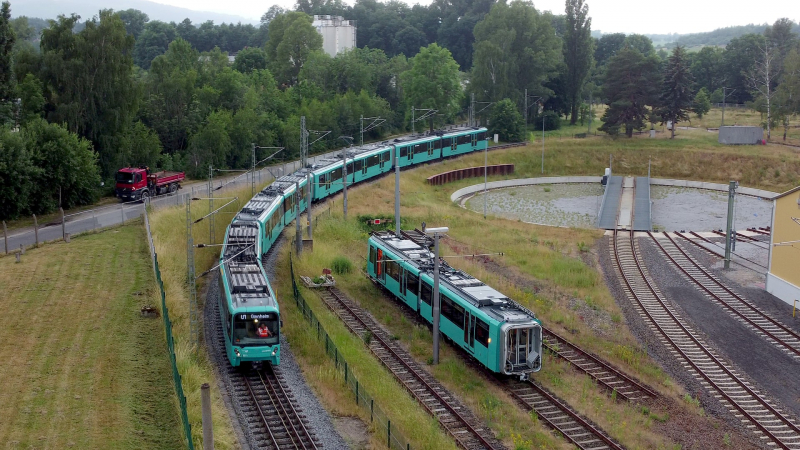LIGHT RAIL AND TRAMWAY
Innovative developments in established rail systems
Innovation and light rail and tramways – does that really go together?
Yes, it does. Although rail-bound local public transport may seem a bit outdated today, it was still all the rage in February 1884 when the Frankfurt-Offenbacher-Trambahn-Gesellschaft (FOTG) was the first company to use “proper” trams to transport passengers between the two neighbouring cities. “Proper” means: with overhead lines. The first horse-drawn omnibus line on the Main existed in 1839 with the commissioning of the “Taunusbahn” to Höchst, the first horse-drawn tram ran in Frankfurt on 19 May 1872, and steam-powered trams chugged through the city in Kassel from 1877. There was also an electrically powered railway that ran to the “Kadettenanstalt” cadet corps in Berlin-Lichterfelde. But since there was no contact wire in place, both rails were electrified. In order to protect people and animals, the track had to be fenced in, so this system was not suitable as a “street” rail system. With the awarding of the concession to the city, Frankfurt received the first three lines of an “electric” tram on 20 January 1899, meaning that it had finally arrived in the tram era.
While trams – in and of themselves – may not be considered particularly innovative, individual developments in their history certainly were. For example, the first large-capacity tram that travelled through Frankfurt in 1956 as the “L” train from Duewag, or the low-floor technology that was used for the first time in Germany in the “R” types from Siemens. They were introduced in Frankfurt in two series between 1993 and 1997.
What Frankfurt introduced in 1968 was a successful model that still works very effectively today in cities like Cologne, Düsseldorf, Stuttgart and Hanover. In Frankfurt, it has since been expanded to nine lines with almost 65 kilometres of service and 84 stations, 27 of which are underground. Speaking of “expansion”: For the extension of the U5 line to the “Europaviertel”, VGF used a tunnel boring machine for the first time. Although this is common practice worldwide, it has not yet been used in Frankfurt for the construction of the underground.
In July 2021, VGF unveiled the first of its 23 new center sections for the “U5” subway types currently in service. The 25-meter-long units do not have regular driver’s cabs, but only two “emergency driver’s cabs” to enable them to be moved around depots. The center sections can be installed in existing train sets, extending them to 75 or 100 meters. This will result in the longest full-length light rail vehicles in Germany. The advantage is, on the one hand, an increase in capacity with the same number of trains in service and, on the other hand, the fact that no costly expansion of the stationary infrastructure or signaling technology is required.
The first “U5-100” went into passenger service on the U4 line at the timetable change in December 2021. The other vehicles will be delivered and then deployed in 75-meter and 100-meter trainsets.
Social Networks
© Stadtwerke Verkehrsgesellschaft
Frankfurt am Main mbH




